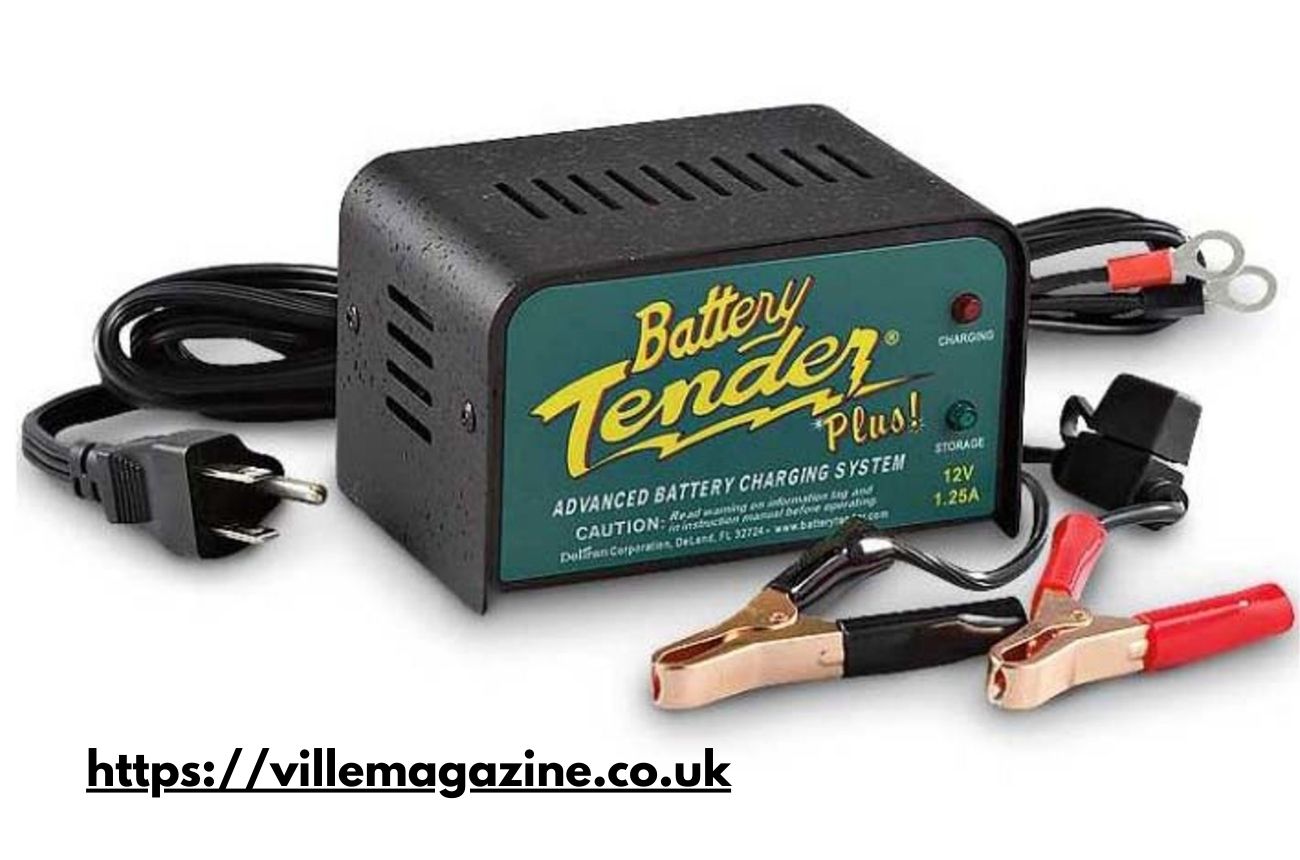Blog
Trickle Charging 101: Extend the Life of Your Battery

In a world increasingly dependent on portable and stationary power—from cars and motorcycles to solar systems and backup generators—battery health is more critical than ever. One of the most overlooked yet essential methods to preserve battery life is trickle charging. But what exactly is trickle charging?
Trickle charging is a method of charging a battery at a very low rate, typically equal to or slightly less than its natural self-discharge rate. This process ensures the battery remains fully charged without the risk of overcharging or overheating. Unlike fast chargers that supply high currents for quick replenishment, trickle chargers maintain batteries in a “ready-to-go” state for extended periods.
As of 2025, with the rise in lithium-ion, AGM, and even solid-state battery technologies, trickle charging has seen renewed attention. Modern trickle chargers are smarter, safer, and more energy-efficient than their early predecessors. This article breaks down the fundamentals, recent innovations, pros and cons, and best practices so you can use trickle charging to extend the life of your batteries—whether in your vehicle, tools, or renewable energy setup.
Understanding Trickle Charging: The Basics
How It Works
Trickle charging provides a continuous, low-current charge (usually under 2 amps) that counteracts the natural self-discharge of a battery. Unlike regular charging methods that stop once the battery is full, trickle chargers continue to supply power, typically under controlled conditions.
In lead-acid batteries, for example, a 12V battery may lose about 5% of its charge every month if left idle. A trickle charger prevents this drop, ensuring consistent voltage.
Types of Batteries Supported
-
Lead-acid batteries (flooded, AGM, and gel types)
-
Lithium-ion batteries (with compatible smart trickle chargers)
-
Nickel-metal hydride (NiMH) and nickel-cadmium (NiCd) — less common today
-
Deep cycle batteries used in RVs, boats, and solar systems
Key Differences: Trickle Charging vs. Float Charging vs. Smart Charging
While often used interchangeably, trickle charging, float charging, and smart charging are distinct.
| Feature | Trickle Charging | Float Charging | Smart Charging |
|---|---|---|---|
| Charging Type | Constant low current | Maintains voltage, not current | Adaptive charging based on battery state |
| Risk of Overcharge | Possible (older models) | Low | Very low |
| Use Case | Long-term maintenance | Backup power systems | Most modern electronics and EVs |
Modern trickle chargers are often hybrids, offering both trickle and smart float capabilities, switching between modes to preserve battery longevity.
The Science Behind Trickle Charging
Self-Discharge and Chemical Degradation
Batteries naturally lose charge due to internal chemical reactions even when not in use. This is called self-discharge. Temperature, battery type, and age all impact how fast this occurs. When left uncharged for long periods, a battery can sulfate (in lead-acid types), permanently damaging its capacity.
Trickle charging combats this by:
-
Preventing sulfation in lead-acid batteries
-
Keeping lithium-ion cells balanced
-
Reducing wear on charging cycles by avoiding deep discharges
Voltage Regulation
Many new trickle chargers in 2025 come with microcontroller units (MCUs) that detect voltage levels and adjust current accordingly. This makes them compatible with more sensitive battery chemistries, such as LiFePO4 used in solar and backup systems.
Recent Innovations in Trickle Charging (2024–2025)
AI-Enhanced Charging
Some 2025 trickle chargers now use artificial intelligence algorithms to:
-
Detect battery health
-
Predict optimal charging cycles
-
Adapt charging based on temperature and age
These features reduce energy waste and extend battery life.
Wireless Trickle Charging
A handful of companies are experimenting with wireless low-voltage trickle chargers for applications like lawn equipment, e-bikes, and home robotics. These systems use magnetic induction to maintain battery levels without physical connections.
Solar-Powered Trickle Chargers
Solar trickle chargers have become more efficient with new thin-film solar cell technology, offering improved performance even in low-light conditions. Ideal for boats, RVs, and outdoor battery systems, these units can now operate year-round with minimal maintenance.
Applications: Where Trickle Charging Shines
Automobiles and Motorcycles
Trickle chargers are ideal for:
-
Seasonal vehicles
-
Cars stored in garages for long periods
-
Motorcycles during winter months
Recreational Vehicles and Boats
Batteries in RVs and boats can be expensive. Trickle charging helps maintain:
-
Deep-cycle batteries
-
Auxiliary power units
-
Navigation and communication system batteries
Power Backup and Solar Storage
Homeowners with off-grid or hybrid solar systems often use trickle charging to:
-
Maintain backup battery banks
-
Keep emergency systems (lights, radios, pumps) charged
How to Use a Trickle Charger Safely and Effectively
Step-by-Step Guide
-
Identify the battery type and ensure your charger is compatible.
-
Connect the charger (positive to positive, negative to negative).
-
Use a charger with auto shut-off or smart regulation features.
-
Leave the charger connected only when needed (or ensure it’s smart).
-
Store in a cool, dry place to prevent overheating.
Safety Precautions
-
Avoid using indoor trickle chargers outdoors unless rated for weatherproofing.
-
Never use a non-lithium-safe charger on lithium-ion batteries.
-
Monitor battery voltage regularly, especially with older, non-smart chargers.
Common Myths and Misunderstandings
“Trickle Charging Will Overcharge My Battery”
Not with modern units. Smart trickle chargers shut off or switch to float mode once the battery is full.
“I Only Need a Trickle Charger in Winter”
False. Batteries deteriorate year-round, especially in warm climates due to faster self-discharge.
“Trickle Charging Is Obsolete”
In 2025, trickle charging is more relevant than ever thanks to new battery chemistries and smarter devices.
Signs You Need to Start Trickle Charging
-
Your car battery dies frequently during periods of inactivity.
-
Your battery voltage drops below 12.4V after storage.
-
You’re replacing batteries more often than expected.
-
Your RV, motorcycle, or boat sits idle for weeks/months at a time.
Choosing the Right Trickle Charger (2025 Buyer’s Tips)
What to Look For:
-
Battery compatibility: Lead-acid, lithium-ion, etc.
-
Amperage: Most use 0.5–2A for trickle purposes.
-
Auto shut-off or smart control
-
Weatherproofing (for outdoor/solar models)
-
Warranty and brand reputation
Top Brands in 2025:
-
NOCO Genius
-
CTEK
-
Battery Tender
-
Victron Energy (for solar setups)
-
Renogy (solar-specific trickle chargers)
Conclusion
As battery technology evolves, so do the methods needed to maintain it. Trickle charging is no longer a niche concept—it’s a critical maintenance practice in 2025. Whether you’re a car enthusiast, solar homeowner, or someone simply trying to avoid costly battery replacements, using a quality trickle charger can extend battery life by 2–3 years or more.
Investing in a good trickle charger is more than just smart—it’s essential in today’s energy-reliant world. By understanding how, when, and why to use trickle charging, you’re not just maintaining batteries—you’re preserving performance, reliability, and safety for the long haul.
-

 Celebrity5 months ago
Celebrity5 months agoTrey Kulley Majors: The Untold Story of Lee Majors’ Son
-

 Celebrity5 months ago
Celebrity5 months agoChristina Erika Carandini Lee: A Life of Grace, Heritage, and Privacy
-

 Celebrity5 months ago
Celebrity5 months agoJamie White-Welling: Bio, Career, and Hollywood Connection Life with Tom Welling
-

 Celebrity4 months ago
Celebrity4 months agoNick Schmit? The Man Behind Jonathan Capehart Success
















